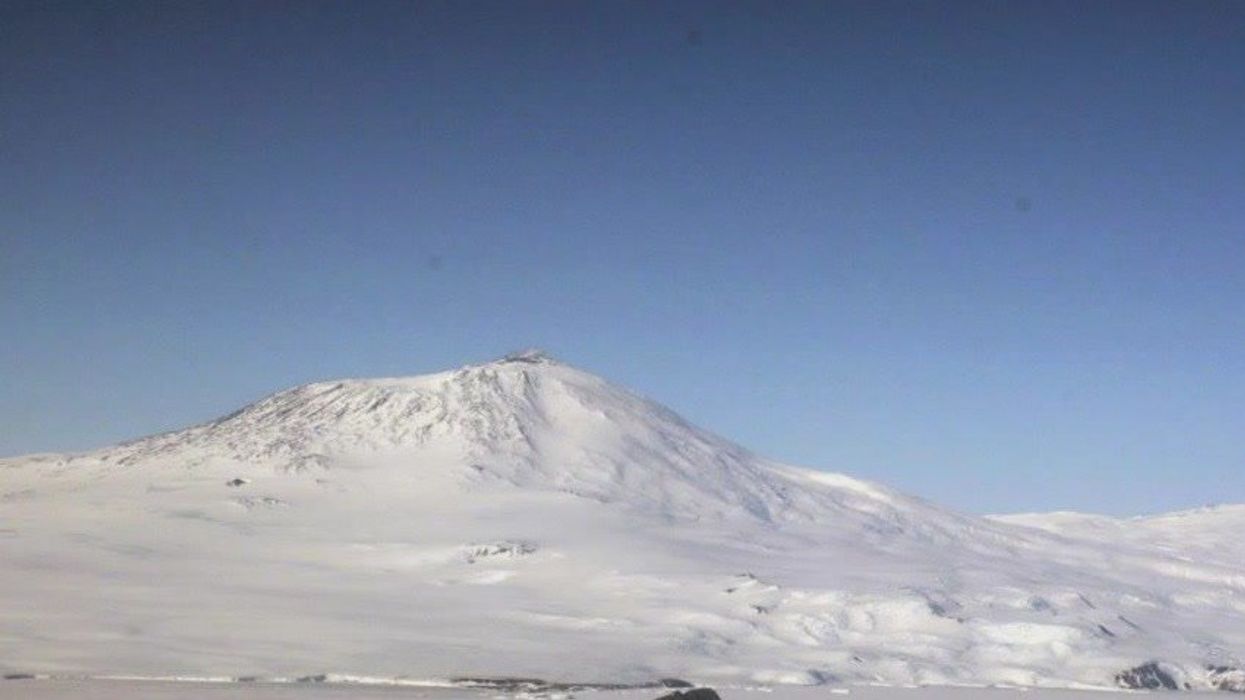Science & Tech
Harriet Brewis
Jun 23, 2024
Volcano in Antarctica spews golden dust
Fox - 13 News / VideoElephant
The sweeping beaches of Australia seem a world away from the towering glaciers of Antarctica, and yet, clues found among antipodean sands have led to a dazzling discovery on the frozen continent.
The incredible find was made when scientists began noticing streaks of pink washing up on the remote southern beach of Petrel Cove, around 90km (56 miles) from Adelaide.
They swiftly worked out that the coloured sand was made up of the mineral garnet, but were stunned to learn of its age and origin.
"This journey started with questioning why there was so much garnet on the beach at Petrel Cove," University of Adelaide geologist Jacob Mulder said in a statement.
Soon, they realised that the grains were tiny little pink flags, signalling the existence of a buried ancient mountain, thousands of kilometres away.
"It is fascinating to think we were able to trace tiny grains of sand on a beach in Australia to a previously undiscovered mountain belt under the Antarctic ice," Mulder added.

Garnet, a deep red-coloured mineral, is fairly common – crystallising at high temperatures, usually where large mountain belts emerge from colliding tectonic plates.
The crystals serve as a record of the pressure and temperature history of the metamorphic rocks in which they form, making them hugely valuable for deducing how and when mountains were formed.
When the University of Adelaide team dated the garnet at Petrel Cove and in nearby bedrock formations, they found that it mostly formed around 590 million years ago – some 76–100 million years before local mountain range the Adelaide Fold Belt took shape, and billions of years after the Gawler Craton crystalline basement formed.
"The garnet is too young to have come from the Gawler Craton and too old to have come from the eroding Adelaide Fold Belt," explained Sharmaine Verhaert, of the University of Adelaide who led the investigation.
Instead, the mineral most likely formed at a time when the South Australian crust "was comparatively cool and non-mountainous," Verhaert added.

Garnet is typically destroyed by extended exposure to waves and currents, so the researchers also concluded that it originally formed millions of miles away, millions of years ago, before surfacing locally, Science Alert reports.
Their investigations revealed a link between the pink sands at Petrel Cove and layers of nearby glacial sedimentary rock and distant garnet deposits previously found in an outcrop of the Transantarctic Mountains in East Antarctica.
These rock formations jut out from a thick ice sheet that otherwise blankets the area, making it impossible to sample the geology of a mountain range that is thought to lie beneath.
The buried mountain belt is thought to be 590 million years old, just like the garnet analysed in Verhaert’s study, but she and her colleagues haven't been able to get a good look at it.
The researchers believe that the garnet-rich glacial sands were ground out of the Antarctic mountains – which remain hidden under the ice – by an ice sheet which moved northwestwards during the Late Palaeozoic Ice Age.
Back then, Australia and Antarctica were connected via the supercontinent Gondwana.
"The garnet deposits were then locally stored in glacial sedimentary deposits along the southern Australian margin," fellow University of Adelaide geologist, Stijn Glorie, explained, "until erosion [once again] liberated them and the waves and tides concentrated them on the South Australian beaches."
It’s amazing how something as seemingly innocuous as a sand deposit can bridge such vast gaps between space and time.
Sign up for our free Indy100 weekly newsletter
How to join the indy100's free WhatsApp channel
Have your say in our news democracy. Click the upvote icon at the top of the page to help raise this article through the indy100 rankings
Top 100
The Conversation (0)














